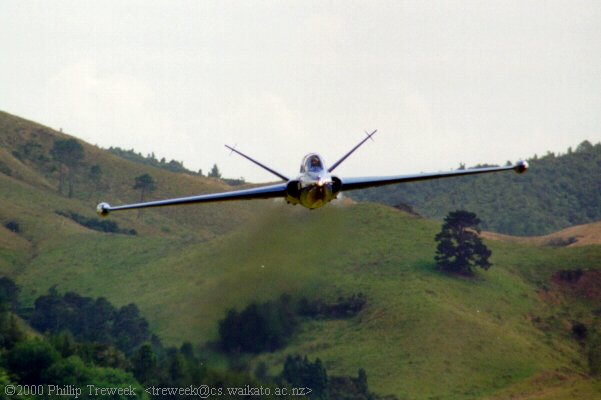1
Irish Air Corps / Super Tucano ALX/ A-29
« on: February 20, 2005, 10:02:51 am »
Continuing with the theme of combat roled Turboprops


http://www.airforce-technology.com/projects/super_tucano
If only the PC-9 was as payload capable as this it would have opened up a world of opportunity for the Corps.
Using a CN-235 to co-ordinate and direct a pair or four Armed Turboprops in escorting ground elements therefore allowing ground forces to operate in broader mobility corridors and respond more effectively to threats.
The same could be done with the PC-9s but with a much less effective payload capability.


| Quote |
| MB-314 SUPER TUCANO/ALX TRAINER/LIGHT ATTACK AIRCRAFT, BRAZIL The EMB-314 Super Tucano is an enhanced version, with faster speed and higher altitude, of the EMB-312 Tucano trainer aircraft, which is operational in the Air Forces of 15 countries. The prototype of the Super Tucano first flew in 1992. Both Tucano and Super Tucano have been developed and built by Embraer of Brazil. The main missions of the aircraft, in addition to basic and advanced pilot training, are border patrol and counter-insurgency operations. The flight envelope of the aircraft is +7G and -3.5G. The aircraft's small size, small visual and radar signatures, together with high speed and agility give the aircraft high survivability. Additional survivability features include armour protection and critical systems redundancy. In August 2001, the Dominican Republic signed a contract for the supply of ten Super Tucano aircraft, to be used for pilot training, internal security, border patrol and counter-narcotics trafficking missions. ALX LIGHT ATTACK AIRCRAFT In 1995, Embraer was awarded a contract to develop a variant of the Super Tucano, known as the ALX or Light Attack Aircraft, for the Brazilian Air Force (FAB), optimised for the environmental conditions of the Brazilian Amazon. The ALX is capable of operating day and night missions from remote bases and unpaved runways with minimal ground support. The first production aircraft was completed in 1999. In August 2001, the Brazilian Air Force awarded Embraer a contract for 76 ALX aircraft, with options for a further 23. Fifty one of these aircraft will be two-seater versions, designated AT-29, which will enter service at the Natal Air Force Base to replace the AT-26 Xavante advanced jet trainers, which are approaching the end of their operational lives. The remaining 25 aircraft will be the single-seat A-29 version. One of the main missions of the aircraft will be border patrol under the Sistema de Vigilancia da Amazonia (SIVAM) programme. The first aircraft was delivered in December 2003 and final delivery is scheduled for 2006. COCKPIT The all-glass cockpit is fully night vision goggle compatible. Brazilian AF ALX aircraft will be equipped with avionics systems from Elbit Systems Ltd of Haifa, Israel, including a head-up display (HUD), advanced mission computer, navigation system and two, 6in x 8in colour liquid crystal multi-function displays. The head up display with 24 degree field of view and the advanced weapon delivery system are integrated through a MIL-STD-1553B data bus. The pilot is provided with a hands on throttle and stick (HOTAS) control. The pilot is protected with Kevlar armour and provided with a zero/zero ejection seat. The clamshell canopy, hinged at the front and rear and electrically activated, is fitted with a de-icing system and features a windshield capable of withstanding, at 300 knots, the impact of a 4lb bird. A Northrop Grumman onboard oxygen generation system (OBOGS) is installed. WEAPONS The aircraft is fitted with two central mission computers. The integrated weapon system includes software for weapon aiming, weapon management, mission planning and mission rehearsal. On-board recording is used for post mission analysis. The aircraft has five hardpoints for carrying weapons, and is capable of carrying a maximum external load of 1,500kg. The aircraft is armed with two wing mounted 12.7 mm machine guns with a rate of fire of 1,100 rounds per minute and is capable of carrying general purpose bombs and guided air-to-air and air-to-ground missiles. Brazilian AF aircraft will be armed with the MAA-1 Piranha short-range infrared guided air-to-air missile from Orbita. The two seat AT-29 is fitted with a forward-looking infrared AN/AAQ-22 SAFIRE turret on the underside of the fuselage. The SAFIRE thermal imaging system supplied by FLIR Systems is for targeting, navigation and target tracking. The system allows the aircraft to carry out night surveillance and attack missions. NAVIGATION The aircraft is equipped with an advanced laser inertial navigation and attack system, a global positioning (GPS) system and a traffic alerting and collision avoidance (TCAS) system. ENGINE The EMB-314 Super Tucano is powered by a PT6A-68A turboprop engine, developing 969kW. The power plant is fitted with automatic engine monitoring and control. The ALX aircraft has a more powerful engine than the EMB-314. The ALX's Pratt and Whitney Canada PT6A-68/3 turboprop engine, rated at 1,600 shaft horsepower, drives a Hartzell five-bladed constant speed fully feathering reversible pitch propeller. The fuel capacity is 695l, which gives a range of over 1,500km and endurance of 6hrs 30mins. The aircraft has a cruising speed up to 530km/h with a maximum speed of 560km/h. |
http://www.airforce-technology.com/projects/super_tucano
If only the PC-9 was as payload capable as this it would have opened up a world of opportunity for the Corps.
Using a CN-235 to co-ordinate and direct a pair or four Armed Turboprops in escorting ground elements therefore allowing ground forces to operate in broader mobility corridors and respond more effectively to threats.
The same could be done with the PC-9s but with a much less effective payload capability.






